Improving the Ambient Light Conditions at the Office and My Workspace
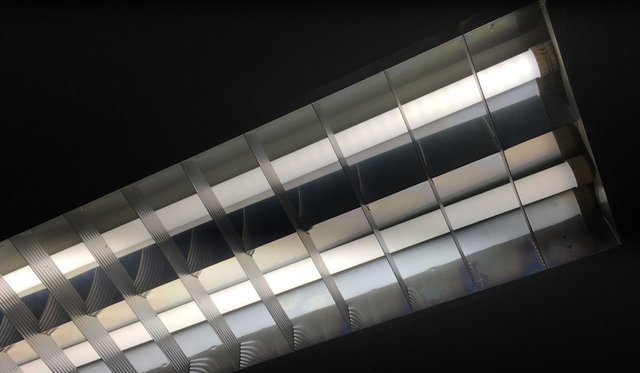
The problem
Earlier this week I went to check my eyesight as lately I thought that it is not as good as it should be. I'm wearing prescription glasses with a small diopter correction, so it was not a perfect 20/20 vision already, but I don't want for things to get worse than they already are. Turns out that my eyes do need a slight diopter adjustment, so new prescription glasses are required. That however got me thinking what has changes in the last year or so that might have negatively influenced my vision...
The most notable change was the lightning at the office, we went from fluorescent lights to LED lights with the idea that it should be better and more energy saving. I haven't put much though about the office lightning as I'm not a big fan of either technologies as far as light goes and neither of the two actually bothered me. LED lights certainly do have some advantages, but the problem with them is that most of the time they do come with some drawbacks as well as a direct result of trying to make them more cost efficient. Both the old and the new lights were pretty much sufficient to properly do my job, or so I thought...
Unfortunately incandescent lamps are almost pretty much a thing of the past, though they are being replaced by not so bad alternative in the form of halogen lamps. The problem is that most people are misled by marketing, putting out features like power saving and longer life and as a result forget what is really the most important thing - the quality of light they provide.
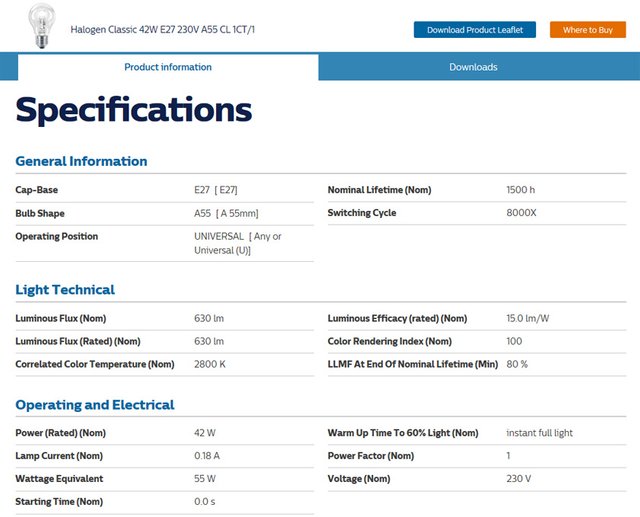
What is Important About Lights
There are a couple of important factors to consider when talking about artificial lights with the most important being the brightness it can provide, the color temperature and the quality of light output or Color Rendering Index (CRI). Besides these important factors come the less important such as the power used, the life expectancy in times of running hours and the number of on/off cycles. The first three are directly reflecting what kind of light you are getting and the second three that are more about the cost associated with running these lights. Ideally higher cost should not be a problem for better quality lights, but that is rarely the case as it is more often all about cost savings without paying too much attention to the quality of the light.

Flickering Light, Another Inconvenience
Pretty much lights that you plug into the mains electricity flicker at a specific frequency as you are using an alternating current (AC) power supply, depending on your region in the world the switching frequency is either 50 Hertz or 60 Hertz. That essentially means the light turns on and off 50 or 60 times per second while it is operating because of the AC power. This is true not only for the old incandescent lights bulbs as well as for the halogen ones, but is also true for the newer fluorescent and even LED lights as well. With older technologies used for lights being more inert and the flickering was not as noticeable as with newer ones like LEDs where as soon as you cut power it instantly goes off, making flickering more visible and annoying.
The lack of persistence in LED lights, unlike with incandescent lights bulbs and halogen ones where the heated wire used to produce light is not instantly off when you cut power is causing issues for many people. Even if you are not so sensitive to seeing the light flicker that does not mean that you will be fine as it may still influence you in a bad way, even though your eyes may not clearly register the flickering of the lights. There are researches saying that even though light flicker may seem imperceptible to you the retina of the eye can still register it at frequencies at up to 150-160 Hz (times per second). There are also researches confirming the side effects that the light flickering can cause, even when it is not perceived as only one in about a couple of thousand people is more susceptible to higher frequency light flickering. One of the common problems associated with light flickering is you getting headaches, but more serious issues with health can also be caused by being exposed to flickering lights every day for hours.
LED lights are operating using Direct Current (DC) and at a lower voltages than what the mains AC line provides (100-120V or 220-240V), so with them you need a kind of power supply to convert the AC input to a lover voltage DC one. The more basic solutions for powering a LED light from AC source often do result in doubling the frequency at which the LED light flickers from the AC frequency. So instead of getting just 50Hz or 60Hz you get double than that at 100Hz or 120Hz and that is still under the safe limit, so it does not make things better, in fact it may make them worse. While 50/60Hz flicker is easier to be noticed by many people and make them think that there might be a problem, the higher 100/120Hz frequencies are harder to be noticed by most people and as a result you may not be aware of the flickering light issue. Pulse Width Modulation (PWM) is also a common way of controlling the brightness level of a LED light, including LED backlights found in phones, tablets, laptops and displays.
Since the more common LED lights are designed to be used as direct replacement of other types of light bulbs they are designed with the power regulator built into them, so that they can directly take the AC voltage and convert it to DC voltage needed by the LED. This makes it easier and more convenient for users, but also makes it harder to design and implement a better power solution that can counter the light flicker or at least increase the frequency beyond the problematic levels. Then there is the problem of price, as you need to maintain an affordable price of the product to make it interesting alternative to users and a lot of brands actually do make sacrifices in terms of quality in order to put up more attractive deals. The alternative is to use LED lights that do not come with built-in power regulators, but are designed to take up DC input from an external power regulator that is connected to the mains AC. You still need to be careful with these as there are many cheaper solutions available that actually do not do much in trying to reduce the light flicker or increase the switching frequency to make it less problematic.
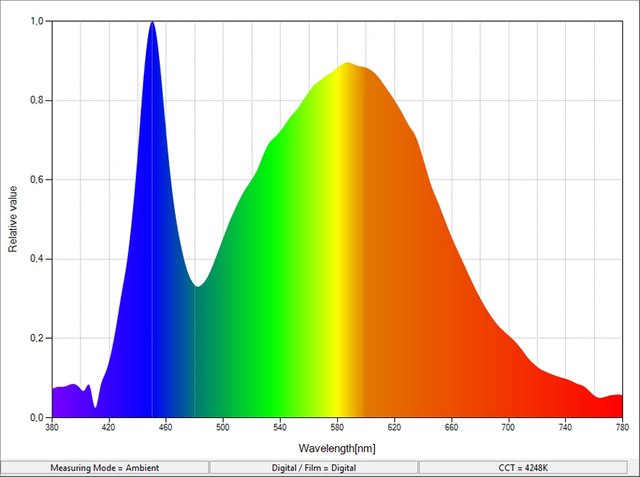
What Is The Situation at My Office
It is time to check what was the situation exactly at my desk where I do my work at. Ideally for the kind of work I do I should have a light level of about 250-500 lux, but the one I actually measured was just 152 lux, so definitely too low. Even though a lot of my work is done on the computer at my workspace it was still too low, regardless of that fact that it did not seem to bother me much, it was still putting additional strain to my eyes. Not seeing a problem does not necessarily mean that there really isn't one.
The color temperature of the LED lights used in the office was measured at about 4248K (4200K lights by specs), this is more on the colder range that is considered better for daylight use in work environments while a lower color temperature warmer lights are considered better solution for home use during the night. So color temperature wise the LED lights were fine, they were designed for office use and when they put them they were properly chosen in terms of color temperature, but that was not the actual problem.
The actual problem with most LED lights is the more limited CRI or Color Rendering Index. A CRI index of 100 Ra is considered the closest you can get to the actual non-artificial light produced during the day by the sun or with other words natural light. The CRI of the LED lights at the office was actually not that bad at about 86 Ra, I have seen much worse performing LED lights (about 80 Ra is probably a common value for LEDs), but it is still far from what incandescent lights or halogen ones are capable of delivering. On the color image above you can see the spectrum of the light emitted by the LED lights used in the office, there is a lot of blue light and the whole color spectrum is not that well covered, though again I've seen much worse LED lights than these, so not that bad here either.
Then there is the flicker... we have replaced the old fluorescent tubes with new LED tubes that do not use external power supply, but rely on a built-in LED driver and as one would expect there is a flicker at 100Hz (50Hz AC power is being used here). I'm not that sensitive to light flicker, though occasionally I would still notice some flickering of the lights. An easier way to check for flicker is to just point your phone's camera at the light as it will most likely be more sensitive to light flicker than your eyes.
The final conclusion was that at my workspace the light was not enough and there was flicker from the LED lights. These two are more than enough to negatively influence one's vision over time... The color temperature and color rendering index were actually pretty Ok for LED lights, so not much to complain about them here.
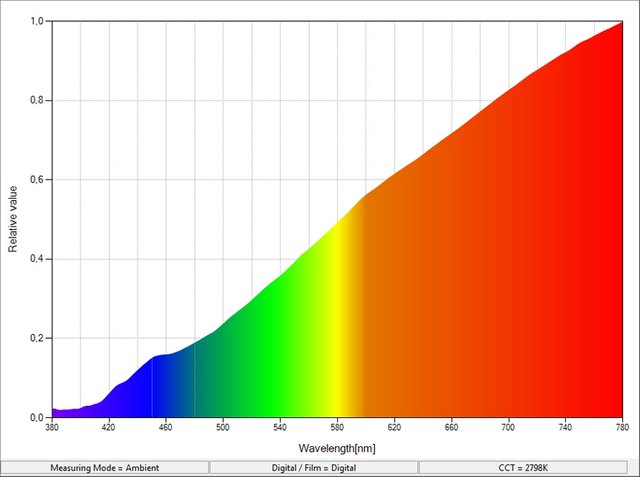
What I did to Improve the Situation
My solution was actually pretty simple, all I had to do is add more light to try to get into the recommended range for the light level. I have added another lamp with a halogen light bulb, trying with both a 42W and 75W one with a color temperature of 2800K I intended to warm up a little the light coming from the LED lights and also to try to counter the light flickering by pointing the halogen light directly over my workspace. The end results were surprisingly good, though I still haven't settled on either of the two lights - 42W or 75W. The first one is providing a little over 300 lux while the second one pushes thing to a bit over 500 lux (I'm varying the results by rotating and adjusting the lamp of course).
With both halogen lights the average color temperature drops to about 3000K or a little over, directly on top of my workspace, with enough light (300-500 lux) and a CRI of about 98 Ra. I may actually try to use a halogen light with a little higher color temperature to keep things a bit more on the colder side of things, but even now I'm pleasantly surprised by the change and the new mixed light is feeling much more comfortable. So do not be swayed too much on making decisions about lights just based on marketing about power savings and extended life, do take into account some other more important factors such as the actual quality of light you will be getting and make sure that it will not affect your workers negatively instead of positively.
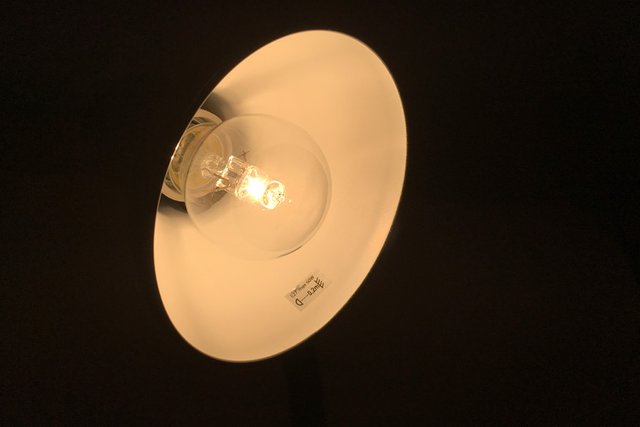
I have actually solved my light problem with a mixed light solution using halogen light bulb to counter the negative issues caused by the apparently insufficient light coming from the LED lights in the office. This is the much easier solution that everyone can implement by adding an additional light at the right place without having to thing about actually replacing any of the office lights... at least not on the short term, though I should probably check the workspaces of other colleagues as well and if the situation there is also far from perfect which I suspect, then something more general may need to be done in order to fix the office lighting problem… including changing offices as we may have to do that in a couple of months anyway due to the increased requirements for more space.
If you have a question or want to add something, then please leave a comment below.
Did you like what you have just read? Check my other posts on steemit @cryptos
If you like what I'm doing for Steem and on Steemit you can support me as a Witness
This post has been ranked within the top 25 most undervalued posts in the second half of Nov 30. We estimate that this post is undervalued by $14.13 as compared to a scenario in which every voter had an equal say.
See the full rankings and details in The Daily Tribune: Nov 30 - Part II. You can also read about some of our methodology, data analysis and technical details in our initial post.
If you are the author and would prefer not to receive these comments, simply reply "Stop" to this comment.
Wow, this is informative!! I thought it was only the quality to bother me as in yellowy rubbish light from newer bulbs but add in the flickering and it's a whole different ballgame!
Light flickering is a real problem that does not get a lot of attention... and it is not just regular LED lights, but also all kinds of digital devices with displays using LED backlight... even TV sets can have issues with LED backlight flicker.
Its something that was totally unknown to me I am hoping I don't start noticing!
I will be writing more on that topic soon, so you might be interested in learning a bit more :)
As I have explained the problem with light flickering is such so that you may not notice it, but that does not mean you will not be affected negatively...
I look forward to reading more!